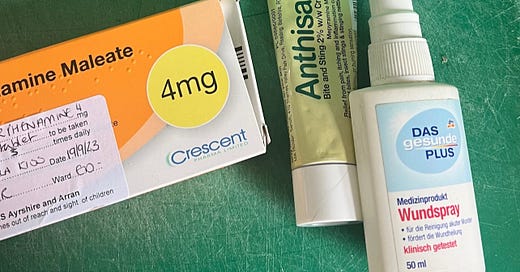Beekeeping Diaries: Surviving the sting—how to handle bee venom & your first aid kit
for paid subscribers
When I first started my beekeeping journey, I didn’t fully understand the power of bee venom. Sure, I knew a sting would hurt. But I didn’t realise how much more there was to it. Bee venom is a complex substance packed with medicinal power.
The venom contains proteins that affect skin cells and the immune system, causing pain and inflammation but also triggering a healing response in the body. For centuries, humans have used bee venom in therapies for arthritis, chronic pain, and even as an anti-inflammatory.
Did you know that the word “venom” actually comes from the Latin word “venenum,” meaning medicine?
As someone who studied history and linguistic science, I find it fascinating how language can shape our understanding of something. In the case of bee venom, it's a powerful substance that is as much about healing as it is about pain.
I used to fear getting stung.
Keep reading with a 7-day free trial
Subscribe to Bees & Beyond 🐝 to keep reading this post and get 7 days of free access to the full post archives.




